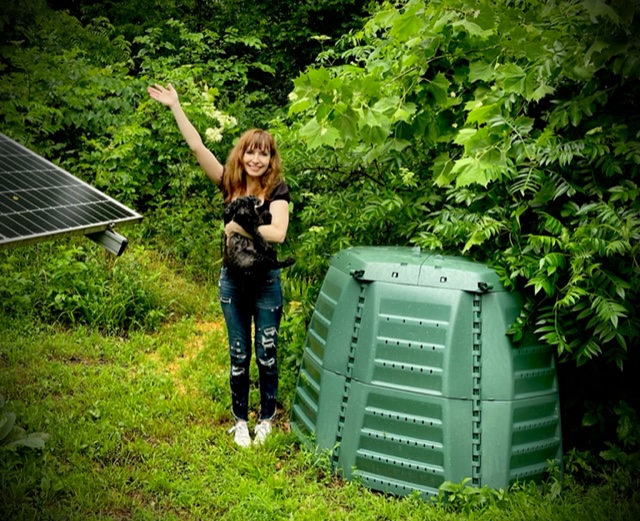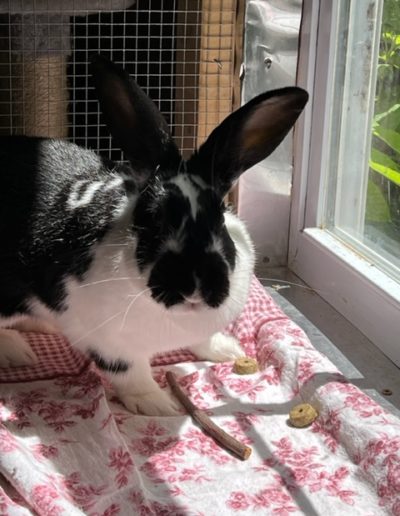In the heart of the Ozark mountains, just miles from the Buffalo River, lives the Human Society of Marion County, a no- kill shelter that is not only having an impact upon the lives of animals and people, they are having a profound impact on the environment as well. Kim Johnson, one of the founding members of this sixteen-acre organization works with twenty volunteers to care for 13 kennels for dogs, 35 cats, 8 rabbits and, at one time, a turkey. Believing that caring for animals goes hand-in-hand with caring for the environment, they incorporated solar energy into their work and what they saved in electricity now goes toward the animals. With a desire to continue making sustainable changes, they decided to install compost and recycling bins on their property and reached out to The Pollination Project.
“We are very thankful for The Pollination Project and the way they helped us. We are amazed by all the wonderful people in the community. We joined The Pollination Project community online and everyone is amazing. I like to see what everyone else is doing. I wish we could all meet in person. It just makes you feel so warm inside knowing there are other people like us who are building amazing projects,” said Kim.

Dry materials, leaves, straw branches and green materials including rabbit vegetable leftovers are composted using a high-efficiency composting method developed by the University of California Berkeley. This method allows them to produce compost in about 18 days which they use for things like their Pollination Garden where they grow native plants, such as Black-eyed Susans and Queen Anne’s Lace. The goal is to make the environment a safe and comfortable place for animals and the people who want to adopt them.
 In building the shelter, Kim and her team made a conscious decision to place the building in an area where they would disturb as few trees as possible. Trails along the property are the perfect place for dogs to be walked when they are not enjoying their playtime in the yard. Cats live in a space affectionately called, “The Cat House” where they have their own areas to run and climb as well as outdoor areas to play.
In building the shelter, Kim and her team made a conscious decision to place the building in an area where they would disturb as few trees as possible. Trails along the property are the perfect place for dogs to be walked when they are not enjoying their playtime in the yard. Cats live in a space affectionately called, “The Cat House” where they have their own areas to run and climb as well as outdoor areas to play.
All animals are free to stay until they find a home and for those who might not find a home, this space becomes a sanctuary where an amazing group of volunteers continues to care for them. Often they find it’s the senior or disabled animals that have the greatest need and they would never turn an animal away. When people apply for animals, this team of volunteers make sure the potential owners meet them in order to assure it’s a suitable fit. Once adopted, if the owner’s circumstances change – they are diagnosed with disease or a family is moving – and they cannot care for them, they will always take the animal back.
“The most challenging part of this work is not being able to take in every animal who needs us – we have limited space,” Kim said, her voice filled with emotion. “But I think of the story my parents shared with me – the Starfish story – about how you might not be able to reach them all but you can make all the difference to one. We try to do as much as we can and focus on the happiness in those stories. We love seeing the smile on people’s faces when they adopt an animal and hearing happy stories throughout the year. For example, one elderly lady who adopted a little dog handwrites letters and sends photos about how the dog is doing. Every volunteer here does what they do because we love the animals.”

As Kim and her team look to the future there are two things she hopes for. The first is to incorporate more energy efficient appliances in their work. They do not use paper towels- only cloth towels – so appliances that help to save energy would allow them to continue to achieve their environmental goals. The second is that this place continues to be a green, nourishing environment where animals and people can find happiness.
Visit their website at http://hsmcpets.org/








